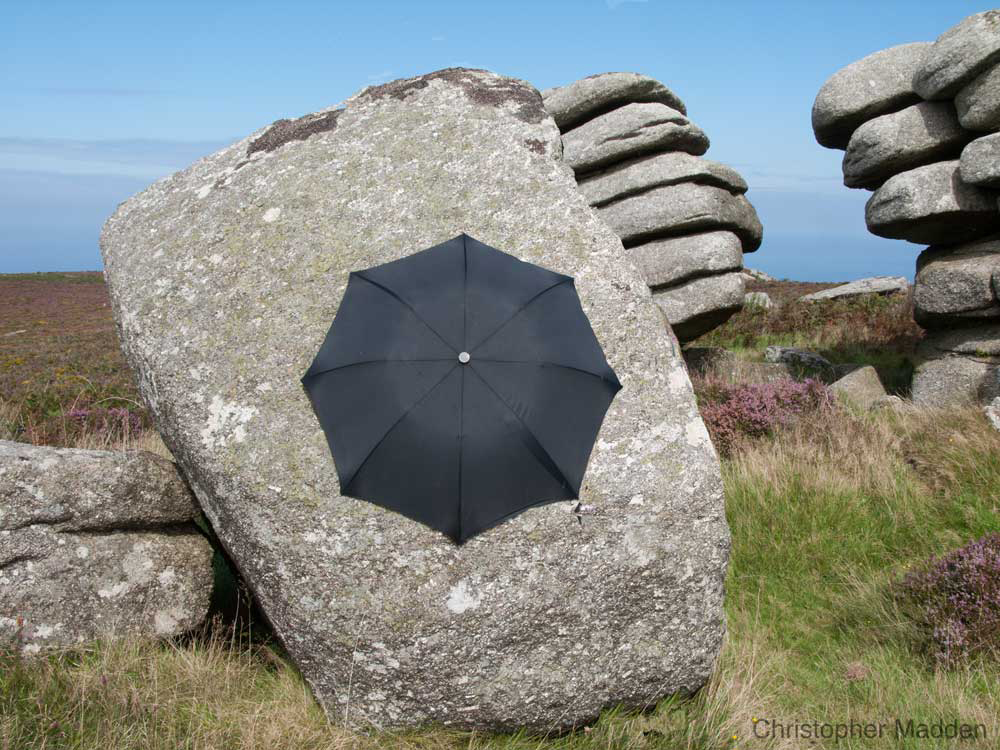
Limpet
Umbrella in landscape, Zennor, Cornwall. September 2018
A work consisting of an umbrella clinging limpet-like to a granite rock on a hilltop in Cornwall.

A work consisting of an umbrella clinging limpet-like to a granite rock on a hilltop in Cornwall.
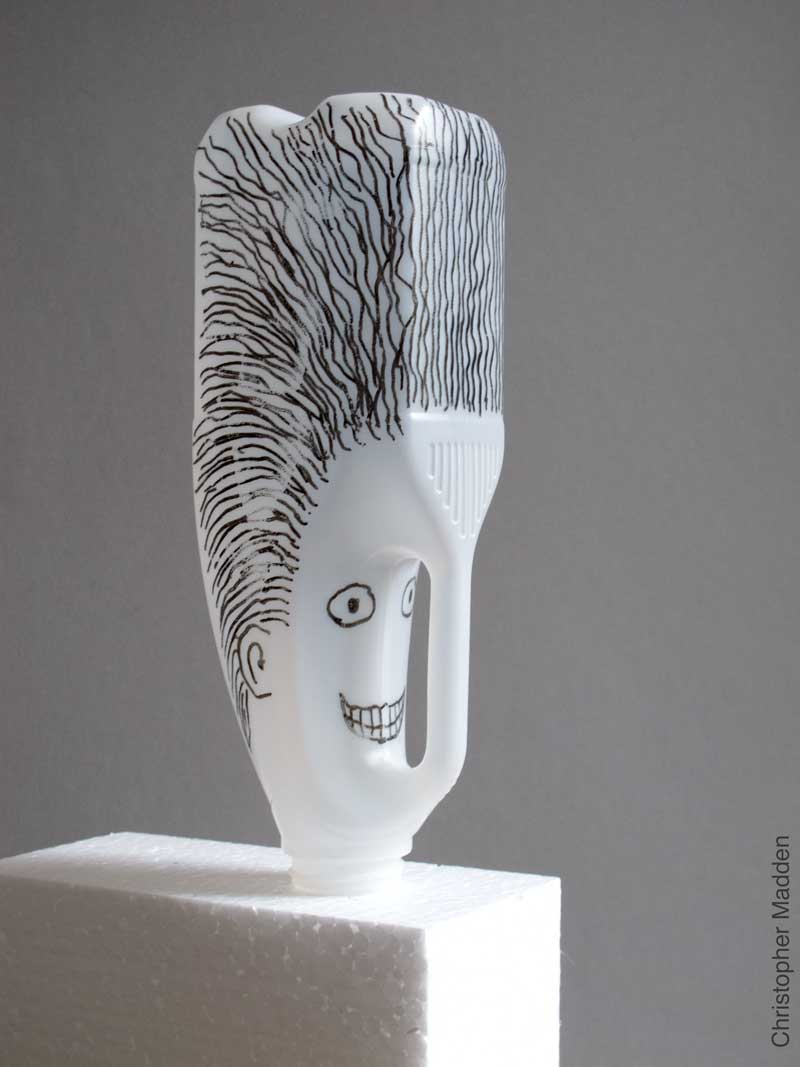
Slightly unsettling heads created from empty plastic milk bottles.
Like many artists I have a habit of collecting waste and recycling it into works of art.
The slightly sinister appearance of these heads, drawn as they are on post-consumer waste in the form of discarded plastic milk bottles, can be interpreted as a comment on the fact that we as humans are destroying the environment through (amongst other things) our profligate use of plastic packaging (I’ve been producinng work connserned with environmental issues since the 1970s).
The fact that the heads also resemble the type of craft-play objects produced by children can be interpreted as alluding to the western world’s current tendency towards a philosophy of consequence-denying pleasure seeking in which the adults in society fail to take responsibility for their actions beyond immediate self-gratification.
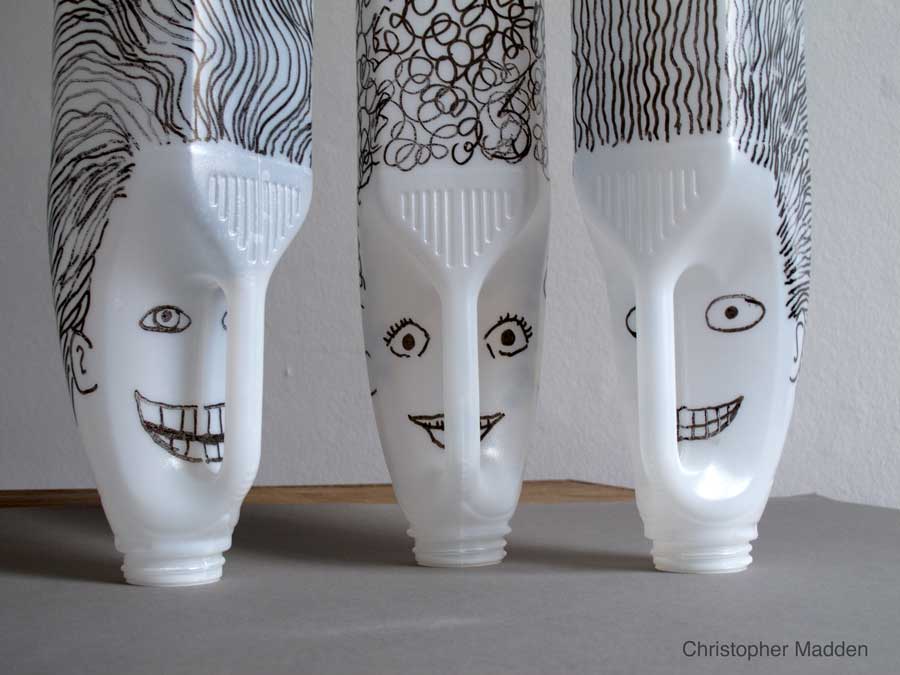
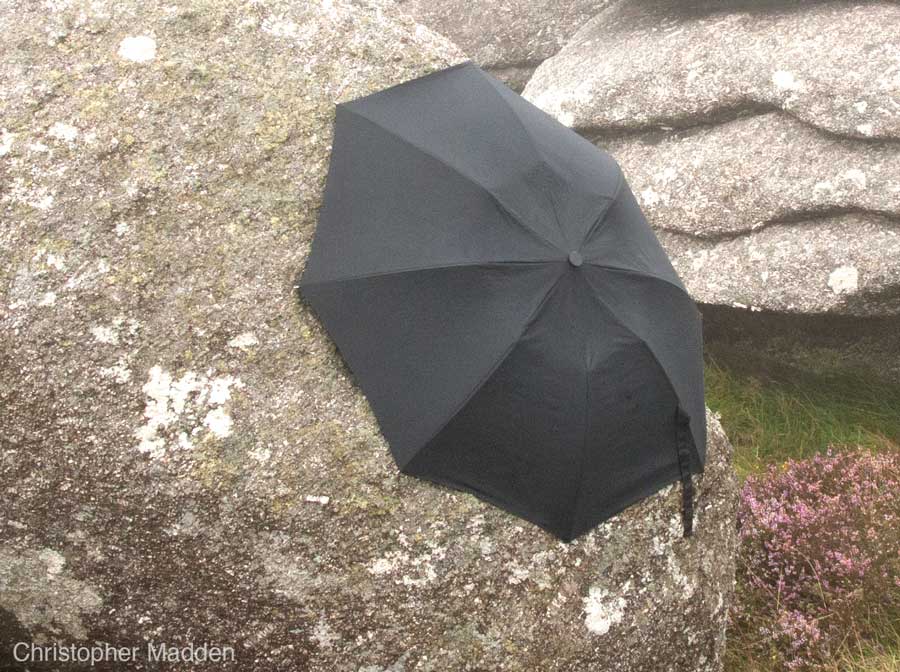
A work of environmental art consisting of an umbrella clinging to a granite rock on a misty hilltop in Cornwall.
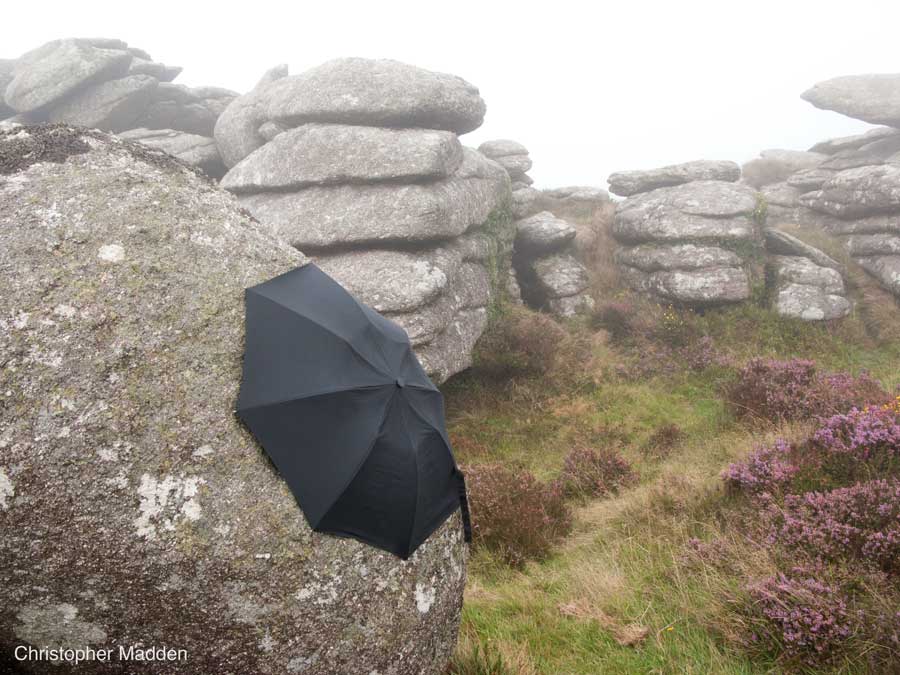
The umbrella in this work of contemporary environmental art or land art can be seen as representing shelter. Perhaps it’s shelter from bad weather caused by climate change or global warming. Umbrellas after all are primarily designed to provide shelter from the weather. The shelter provided by the umbrella in the face of climate change is however woefully inadequate. An umbrella after all is a very flimsy structure.
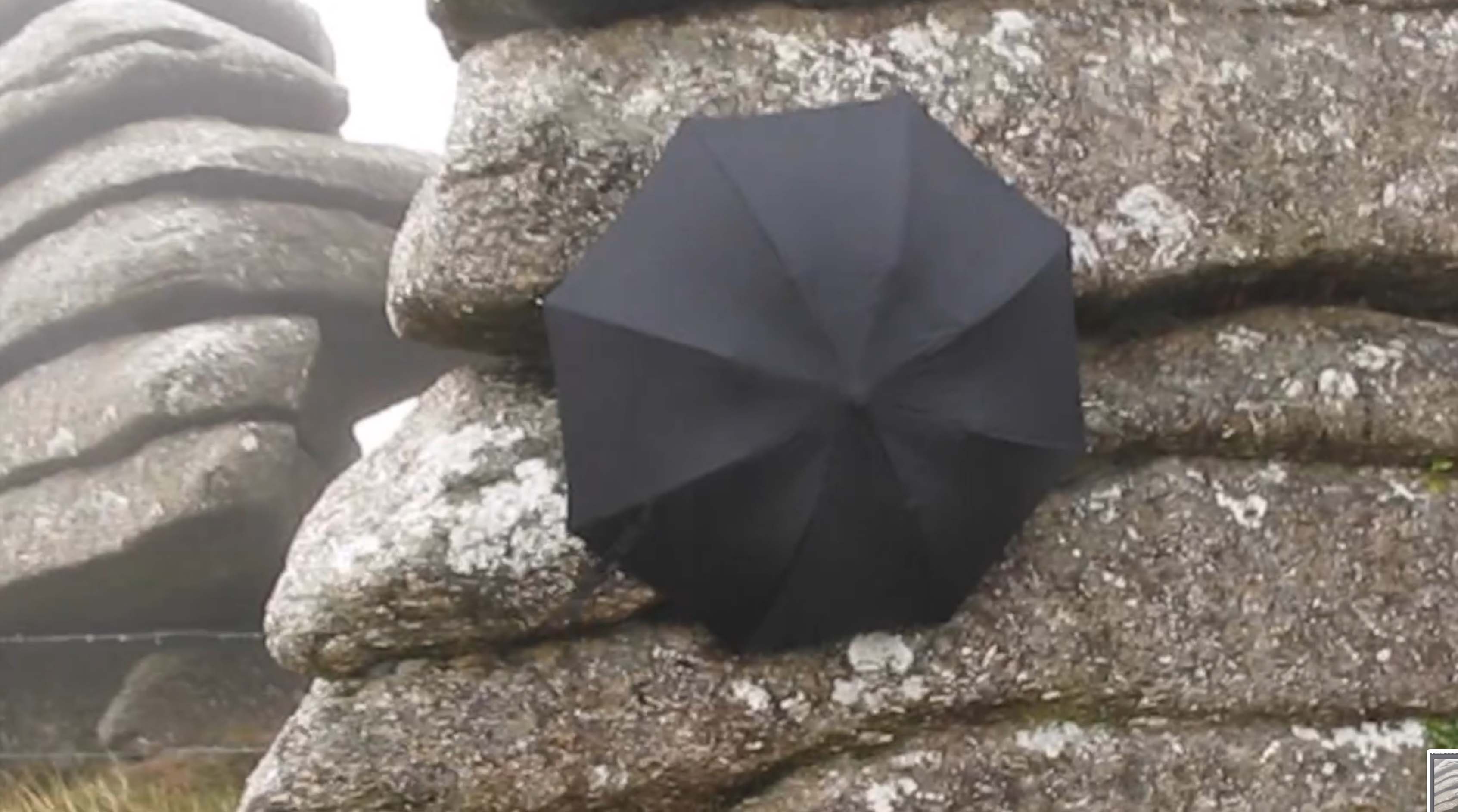
A work of art in the environment consisting of an umbrella clinging to a granite rock on a windy and misty hilltop in Cornwall.
The umbrella in this work can be seen as representing shelter. Perhaps it’s shelter from bad weather caused by climate change or global warming. The shelter provided by an umbrella in the face of climate change is however woefully inadequate. The flimsy structure of the umbrella can be seen as echoing humanity’s flimsy attempts to counter climate change.
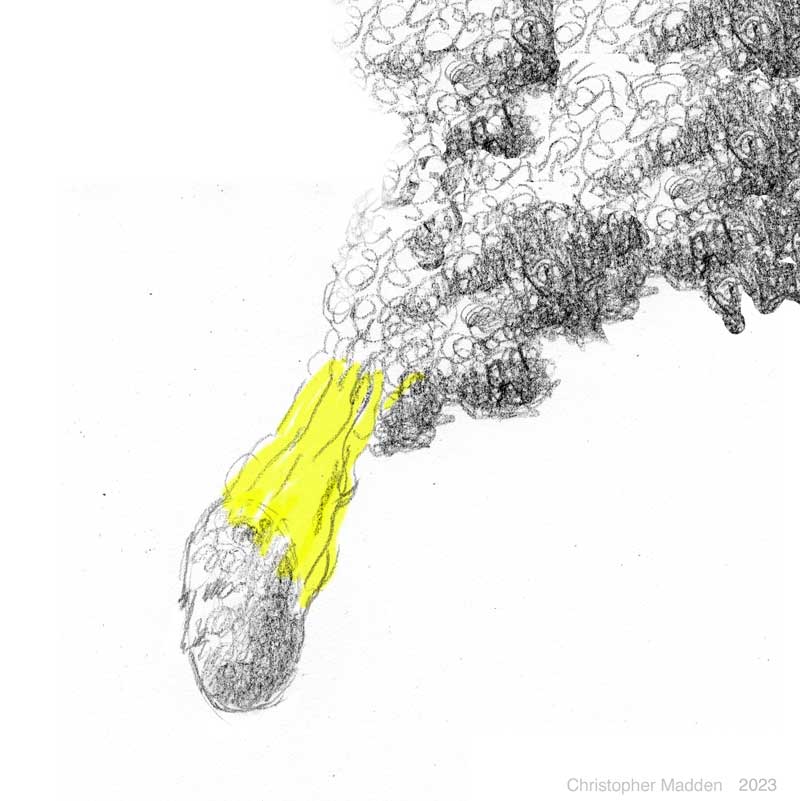
This sketch, drawn spontaneously in a sketchbook, contains obviously strong psychological symbolism. It shows a floating head on fire. Are the flames the hair? Or are they the person’s thoughts or state of mind?
It’s an image with associations to psychology, mental health, mental illness and wellbeing.
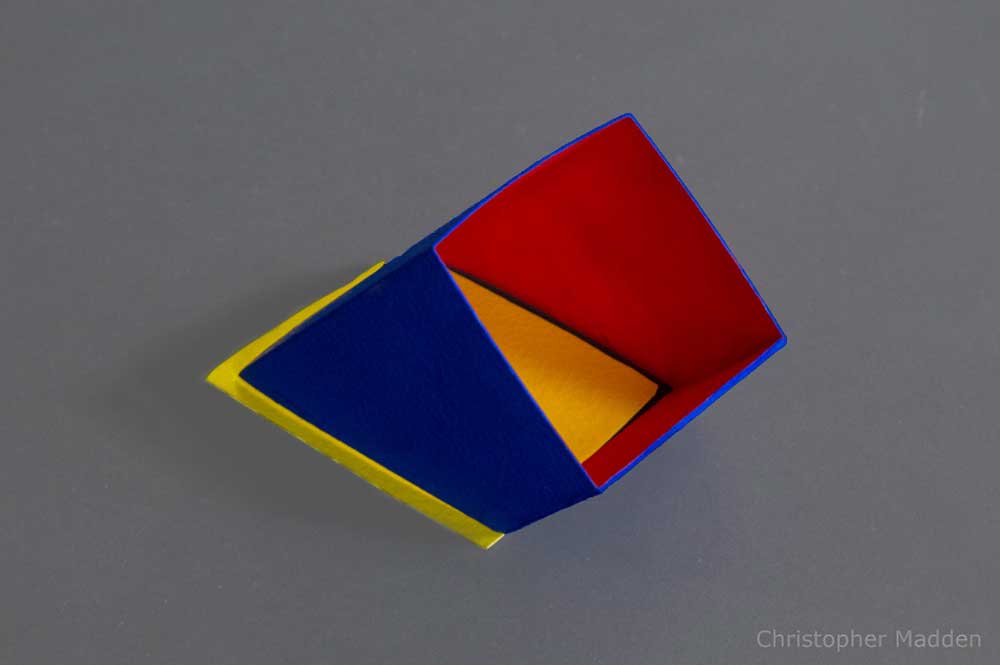
A small paper sculpture of an abstract form in primary colours created from folded and coloured watercolour paper.
Contemporary paper sculptures are frequently very intricate, often featuring frill-like or fringe-like elements. My own works in this medium tend towards the more minimal end of the spectrum. There’s often a nod towards constructivist art. The fact that the sculptures are made of paper or card gives them a sense of fragility or vulnerability. Along with this, the fact that they look as though they may be made of cut pieces of metal sheeting rather than paper gives them an ambiguous quality of robustness. Most paper sculpture unambiguously exploits the fragility evident in the sculptures.
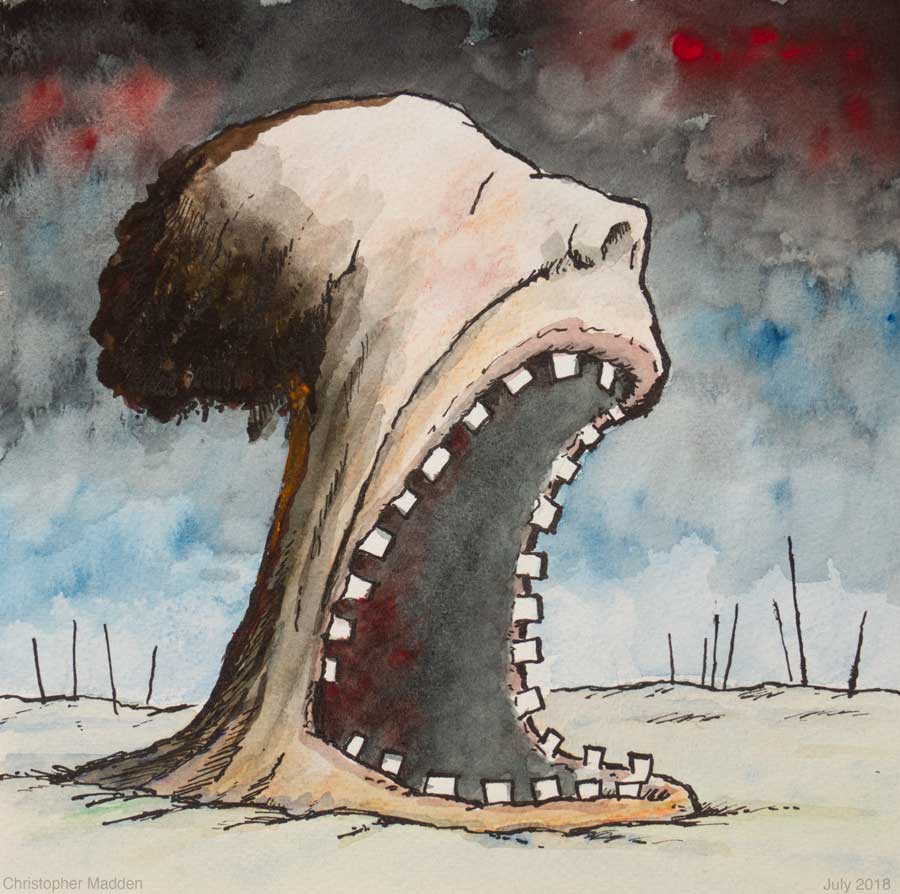
A gouache painting featuring a head with giant screaming mouth. The head has no body, and is situated in a desolate landscape.
The scream is an existential scream, no doubt indebted to The Scream by Edvard Munch.
The person in this particular Scream has no body, only a head. This is possibly to show physical impotence in the face of something terrible: the person can’t even try to run away.
The barren and desolate landscape in the painting could be a metaphor for the existence in which the figure finds itself. Maybe an existential crisis in the face of an overwhelming but possibly meaningless universe (as in Much’s scream). I don’t actually believe in a meaningless universe, by the way, because I believe meaning is automatically generated by the existence of the universe. No religion needed.
The painting probably reflects aspects of existential environmental anxiety, as the destruction of the environment has been a concern of mine for almost sixty years.
It’s definitely a work of psychological art
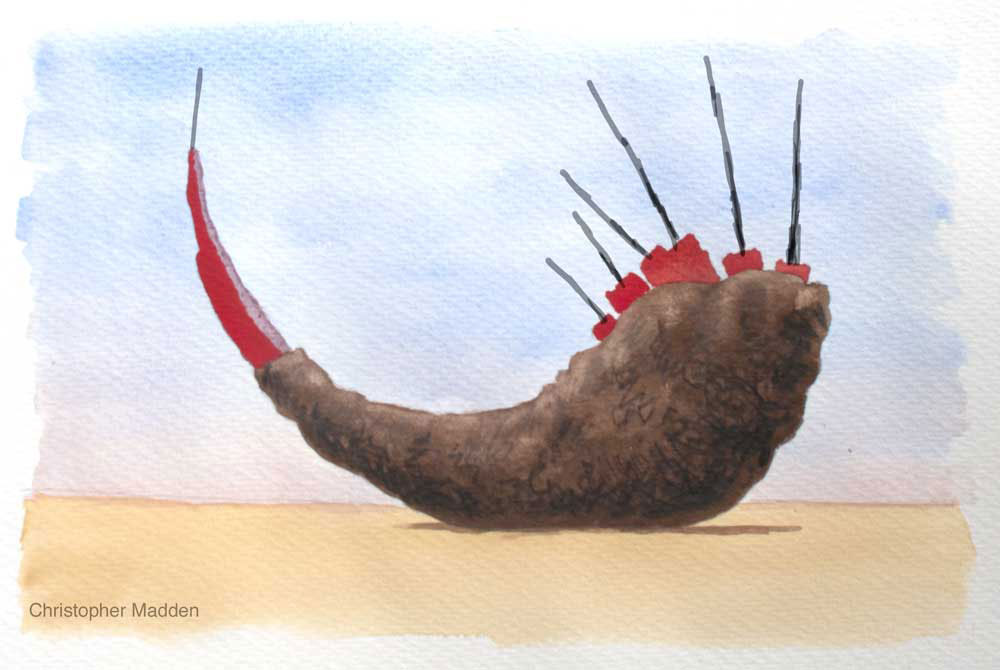
A work about climate change and global warming.
The work contains definite ominous overtones. These are probably linked to the general atmosphere of foreboding that permiated society when the artwork was created in 2018 and that still permeate society today, chief amongst which was the phenomenon of global warming or climate change, which more and more threatens to disrupt the earth’s entire ecosystem and to turn civilisation as we know it upside down. And this is just the beginning.
I’ve been interested in environmental issues since the 1960s when environmentalism was chiefly concerned with the various threats to wildlife as a result of human activity. Climate change or global warming were not generally in people’s awareness back then.
Whatever the object is in this painting, it is abandoned or marooned on a featureless landscape that probably represents the devastated earth following the ravages of climate change and environmental destruction. The fact that the object looks very large is probably symbolic of the enormity of the threat that climate change represents.
The imaginary object in the image bears some resemblance to an organic form, possibly a part of an animal’s anatomy – perhaps a horn or a jawbone. The slender forms that protrude from what may be the teeth of a jawbone or could possibly be legs, turning the form into something like an upturned crustacean. Whatever it is, the object has the feel of a decaying life-form. The object also has something of the feel of an unnatural artefact – perhaps a piece of rubble following the destruction of a building (with the slender forms representing metal rods in reinforced concrete).
Having said all that, the work was not created with any particular symbolism or meaning consciously in mind. I’ve worked backwards from the finished image to find its possible meaning. I’m sure that it also has meanings that are purely to do with the workings of my own brain.
A video of an environmental art installation in the countryside that comments on the behaviour of some dog walkers.
The work features an avenue of discarded dog pooh bags.
The work was inspired by the experience of going on many walks in the countryside and coming across discarded black plastic dog poo bags: sometimes hidden, sometimes in full view. There’s a theory that the dog owners leave them there to be picked up on their return, however, many of them don’t do it.
The work was created near St Ives, Cornwall.
Update, 2021. This work has taken on more relevance since the start of the Covid-19 pandemic, as more people purchase more dogs, which in turn produce more excrement. The fact that some of the new dog owners are quite casual about their ownership responsibilities is reflected in a marked increase of discarded dog poo bags.
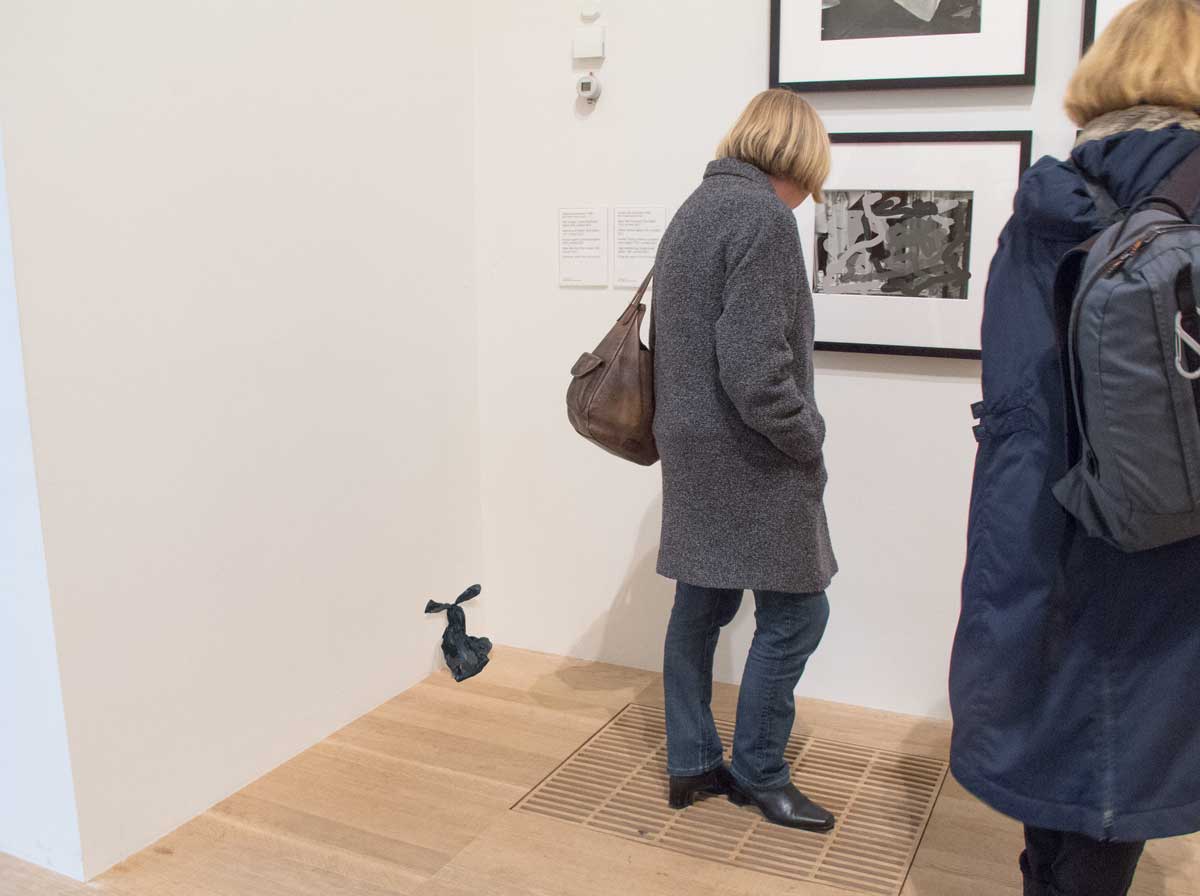
The image above shows a related dog poo installation in an art gallery (visualisation).
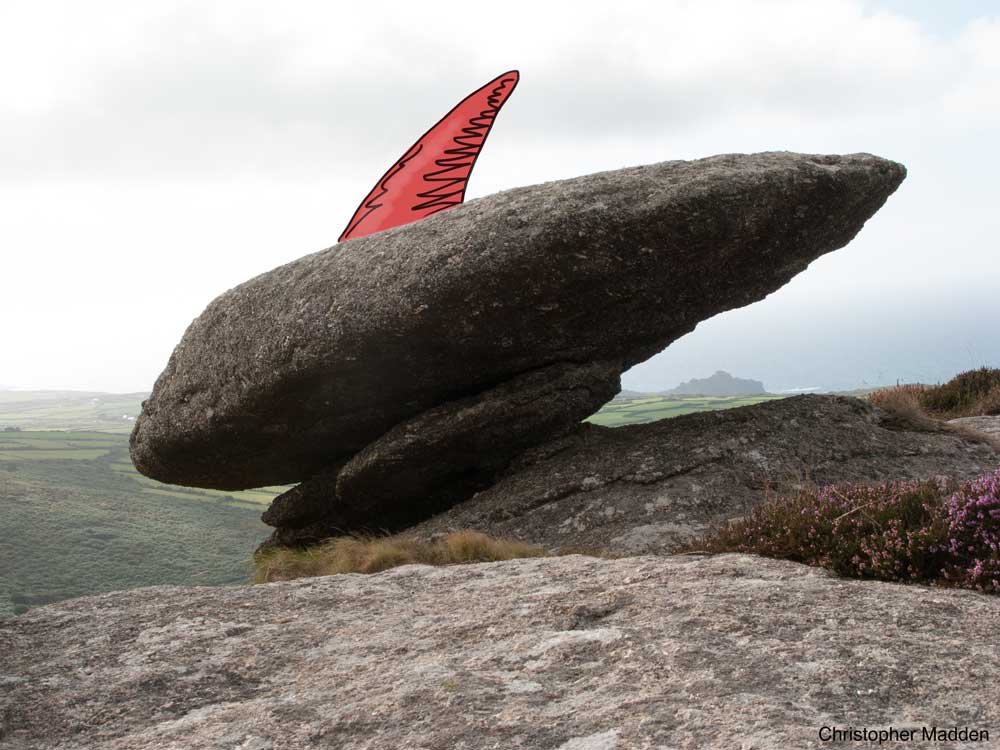
A photograph of a natural granite rock formation with a drawing of a fin-like object added to the photograph as though it is attached to the rock.
The rock formation in the photograph is on the Penwith peninsula in west Cornwall, a few miles from St Ives. The large rock on which the fin is drawn is a rocking stone, known locally as a Logan stone. The stone is said to move slightly when pushed correctly.
The image is a finished artwork, despite the fact that it resembles a concept study for a sculpture in the landscape. The drawing of the fin is deliberately inconsistent in terms of photographic realism with the rest of the image.
Having said that, I’m not ruling out the possibility of an actual sculpture.
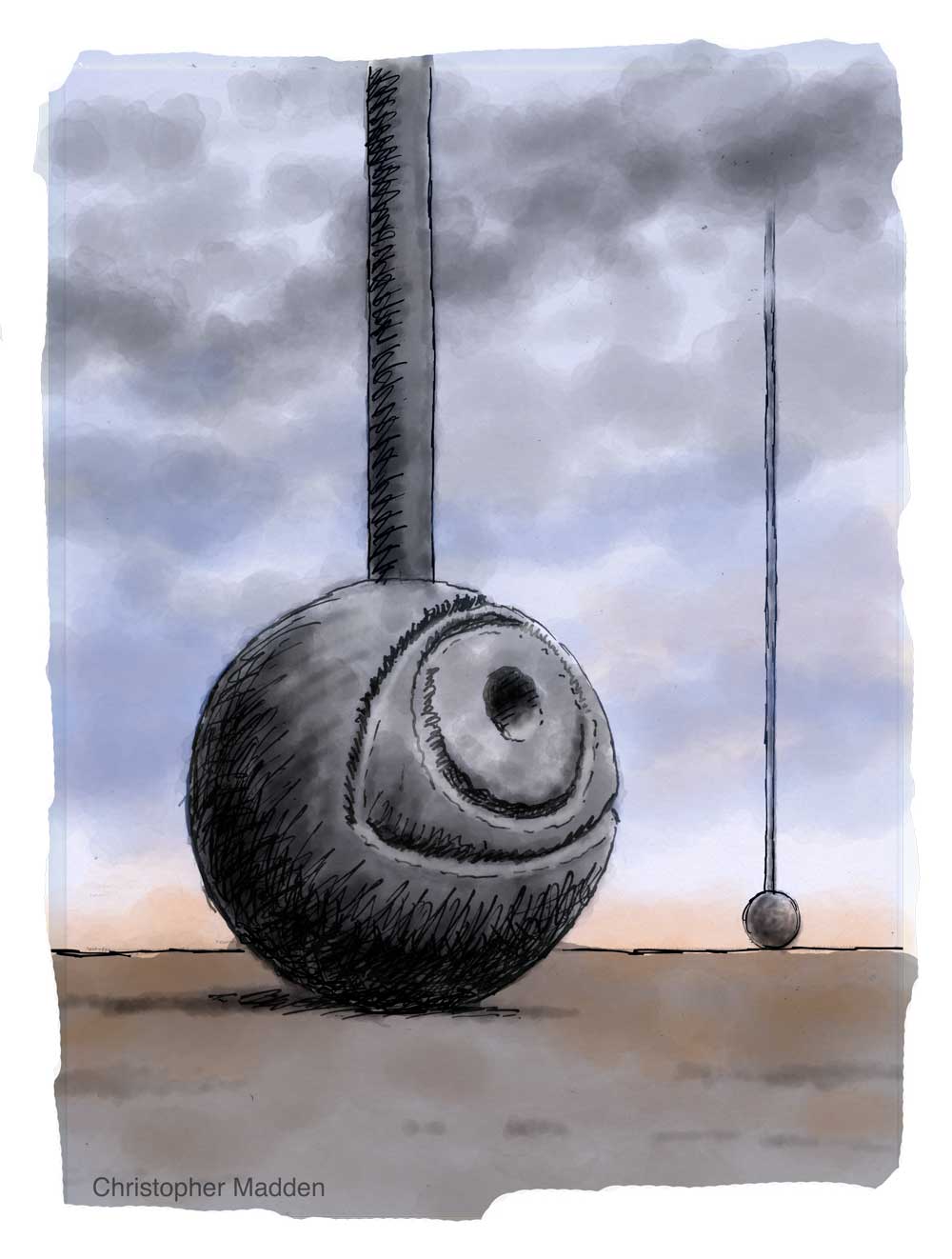
A surrealist sketch of a gigantic stone eye resting on the ground. A mysterious pipe-like cylinder extends upwards from the eye. A similar eye in the distance shows the pipe-like structure extending unfeasibly high into the air.
The image is almost definitely influenced by surrealist art, including the surrealism of Max Ernst and Rene Magritte.
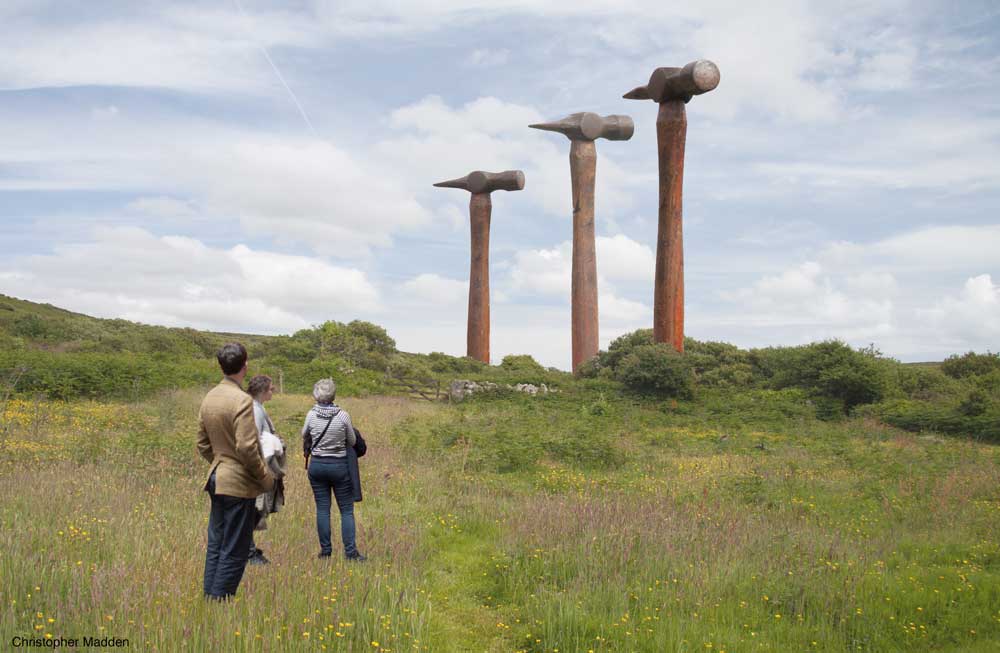
A visualisation of a concept for a sculpture in the landscape.
The landscape in the photograph is the Penwith peninsula in west Cornwall.
The hammers are meant to project a sense of overbearing force, the fact that there are several of them possibly implying organised force (such as military force). Hammers, to me, have a certain anthropomorphic quality to them, suggesting a degree of human identity – a long thin body with a head at the top. The blank facelessness of the heads of the hammers in this image suggest a mindless power (I’ve done other works in which hammers have faces).
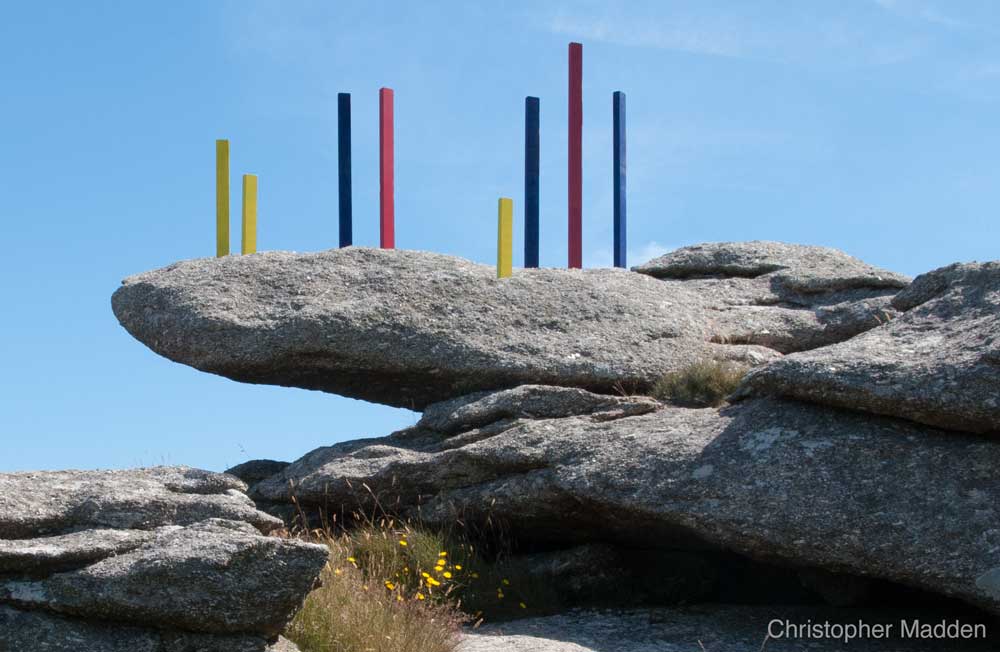
One of my temporary sculptural works or interventions in the landscape near St Ives, Cornwall.
There’s a tendency for land art to be either very ephemeral and transient (such as Andy Goldsworthy’s work with leaves) or very permanent (such as Robert Smithson’s Spiral Jetty). The photo below shows my work becoming very ephemeral indeed by floating up off the ground as if defying gravity. The photo was achieved by taking several photos of the wooden batons being held in the air and then photoshopping the holder of the batons out of the picture.
Land art also has a tendency to involve circles, probably because of the circle’s links to some spiritual concepts (such as the circle of life, yin and yang, the cosmos etc). Spirals and other sinuous or organic forms are also common for similar reasons. I’ve chosen to go the other way with this work, employing very mechanical straight lines (as a comment on the common phrase “There are no straight lines in nature”) and primary colours that in nature are normally only seen in small concentrated quantities in such places as flowers and birds’ feathers.
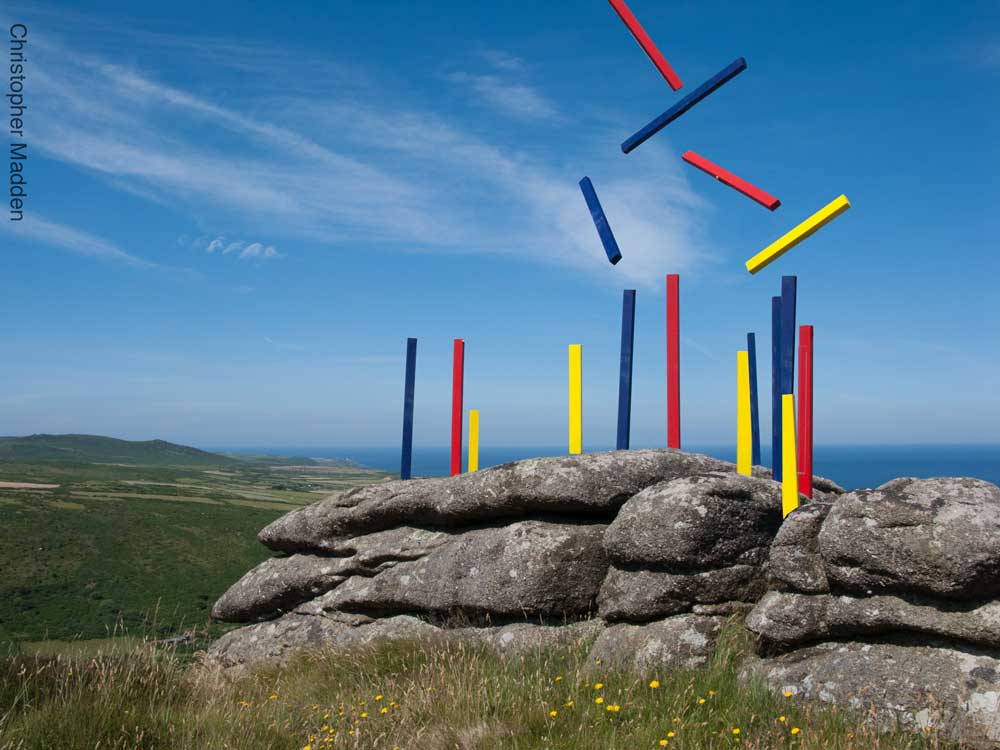
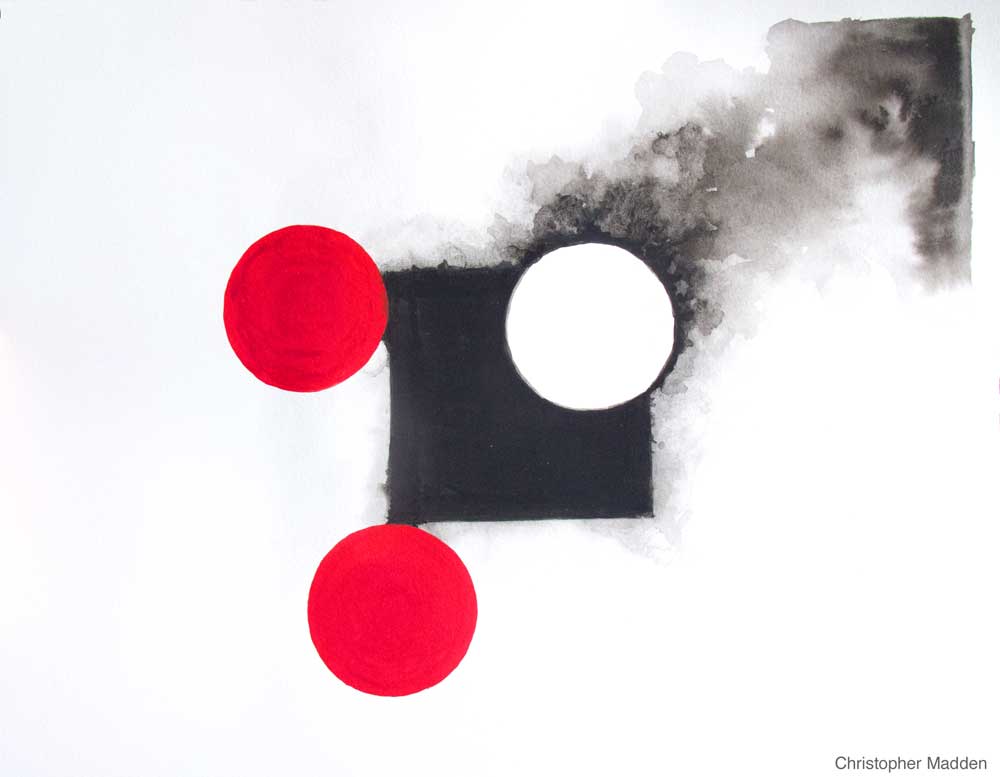
This is a composition from a series that explores the dynamics of stability and instability.
The black square in the image suggests stability, while the red circles, with their lack of roundedness and their off-kilted positioning, suggest instability. The smoke effect adds to the sense of disequilibrium, as does the white “ghost” circle.
The painting has no specific right way up, which all helps with the feeling of precariousness that the work generates.
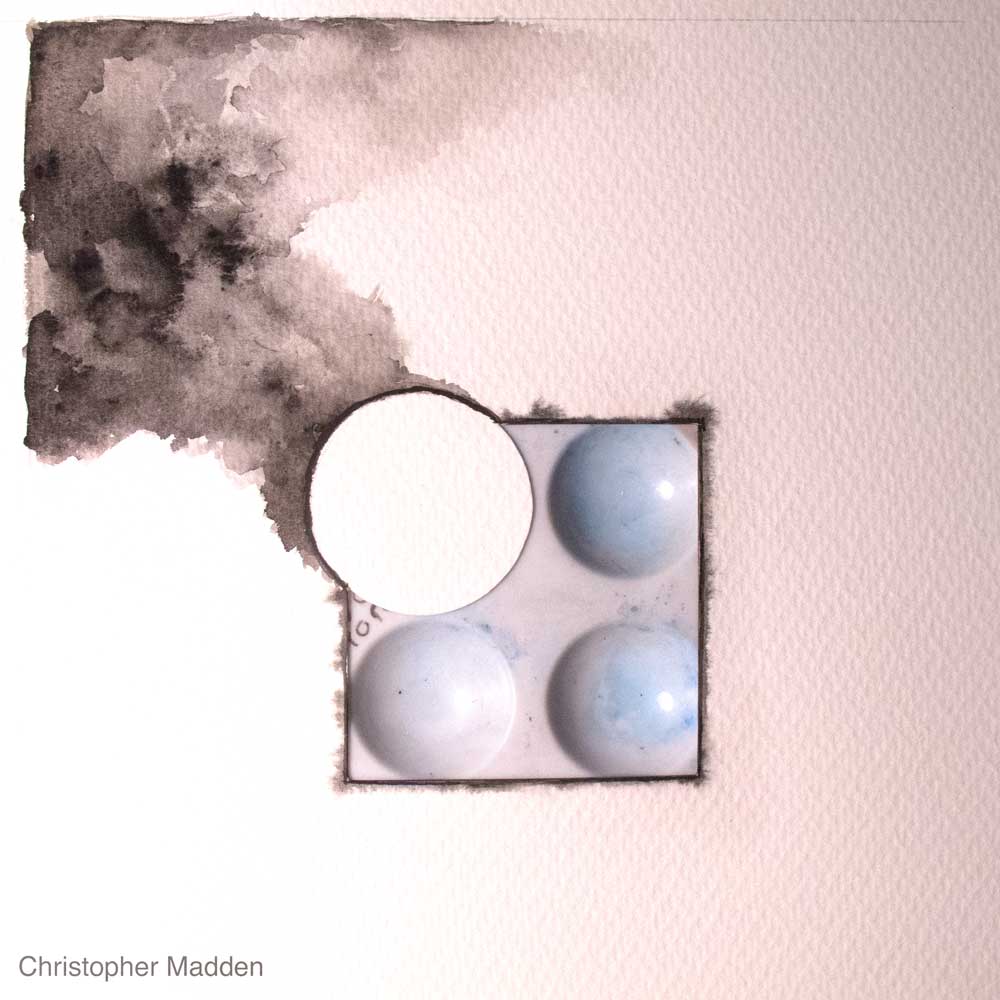
An abstract monochrome watercolour painting in which the watercolour resembles smoke eminating from a white circle.
The found object in the artwork is visible through a hole that is cut in the painting. The object is the mixing palette that was used for mixing the paint in the painting.
There’s a certain amount of humour in this (to me at least), as the found object was an incredibly convenient object to find. I just had to reach over and pick it up.
I like the way that the palette isn’t obviously a palette, as an obvious palette in an artwork is a bit self-referential and solipsistic.
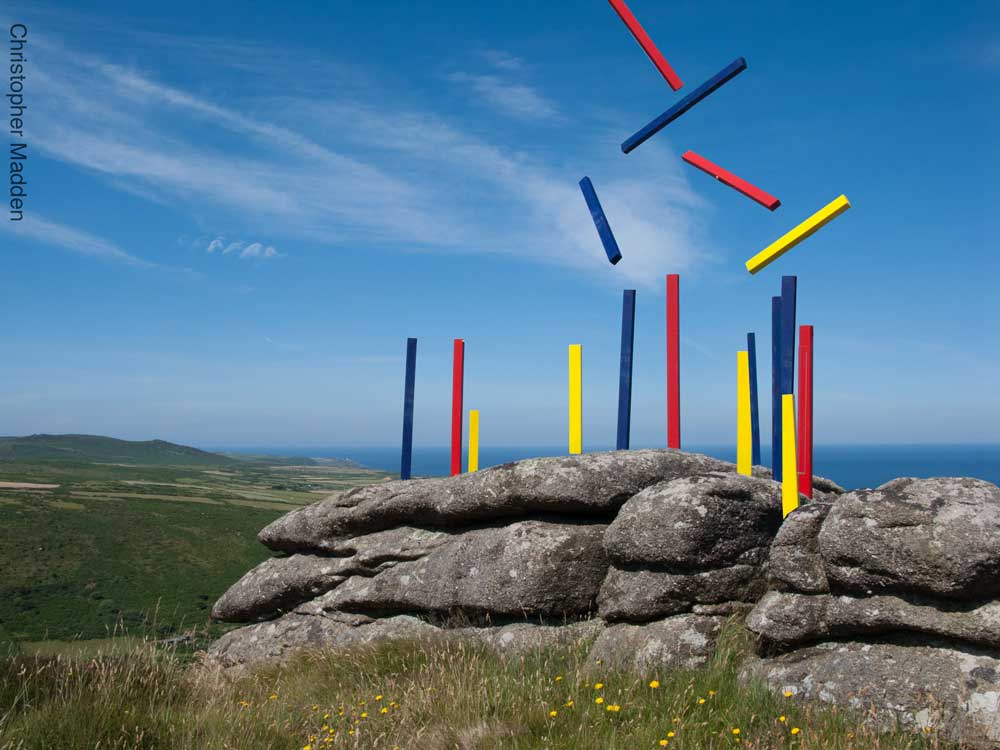
Land art sculpture composed of lengths of painted wood battens (the type of wood commonly used in building construction).
The sculpture was created by positioning a small number of battens in the landscape, photographing them, repositioning them, rephotographing them and then merging the photographs.
As a result the work has an interesting relationship with time. The sculpture never existed in its entirety as depicted in the photograph, each batten only being in position for long enough to take a photograph. The sculpture only takes on its final form when the twenty-five minutes that it took to position and photograph the battens are compressed into a single instant.
A work of transient land art near St Ives,Cornwall: an intervention in the landscape, or art in the environment. The wood battens are about a metre long.
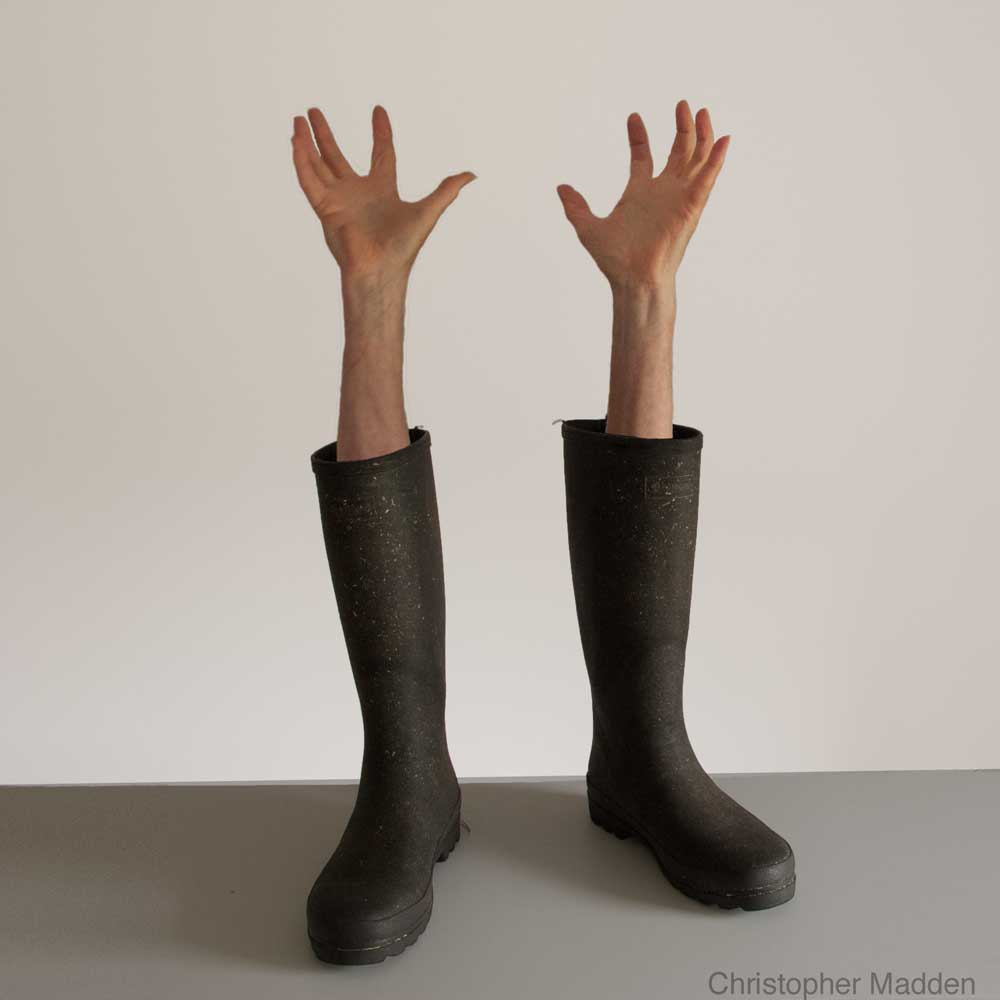
A photomontage showing arms emerging from the tops of a pair of wellington boots.
The arms are sinking down into the boots, as though the footware is devouring the owner of the arms. The theme of predatory footwear is one that I’ve explored several times over the past few decades. Another example can be seen here – shoes with teeth.
Or are the arms emerging from the boots? An example of ambiguity in art.
This photomontage was created while I was exploring various options for creating a sculpture that included wellington boots. I feel that these boots have a strong sculptural presence, and I’m quite surprised how under-represented they are in the field of sculpture.
The image, which I think probably falls into the category of contemporary surrealism, is meant to be both humorous and unsettling.
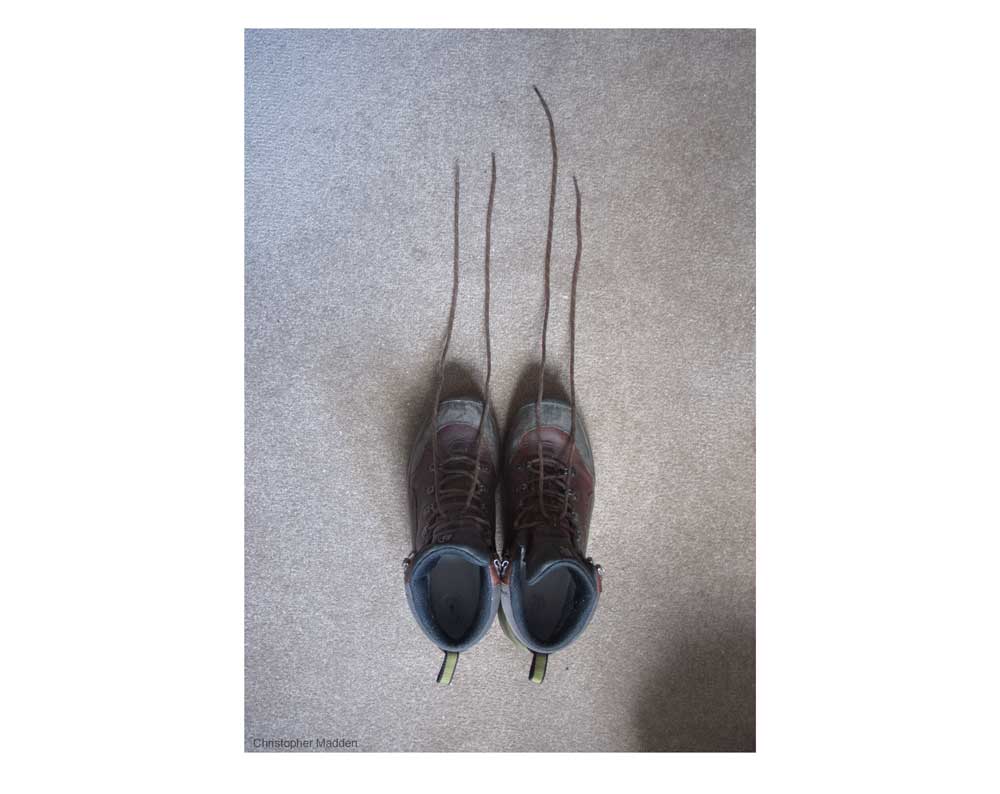
This photograph shows a pair of walking boots with their laces extended away from them.
I took the photograph when I noticed the boots on the floor (they are my boots). The laces and the lighting from the window create a strangely unsettling effect, to me at least.
The photo was taken while I was visiting Oban in Scotland – on the same visit as this slightly surreal photograph.
.
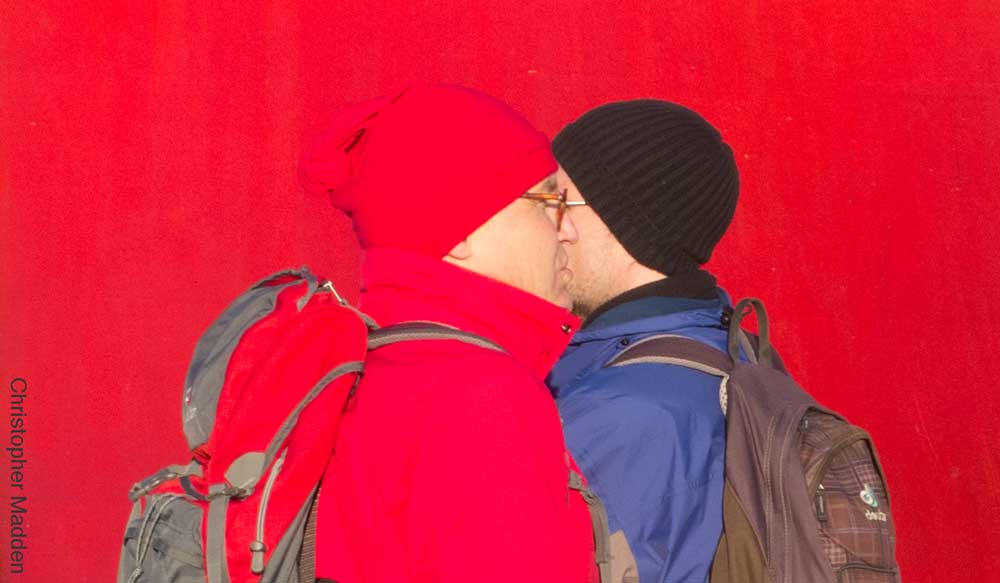
A photograph of two people standing in a way that makes their heads seem to merge in an unsettling and humorous way.
The bizarre, surreal effect of the photograph is enhanced by the uniform bright red background and the colour and style of the clothing. The glasses help as well. The photograph was taken on a ferry between Oban and the Isle of Mull in Scotland, May 2018.
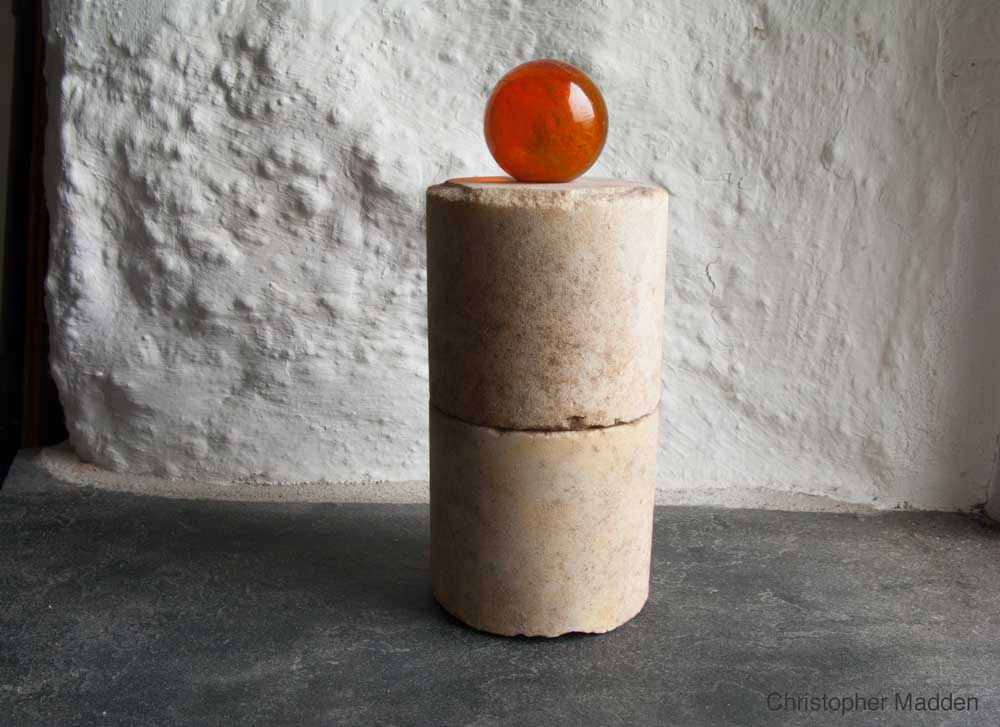
An abstract sculpture exploring the effects of light using a translucent resin sphere on the top of a marble column.
In the photograph the sculpture is positioned on a slate base against a rough painted granite wall to give the work a robust organic feel.